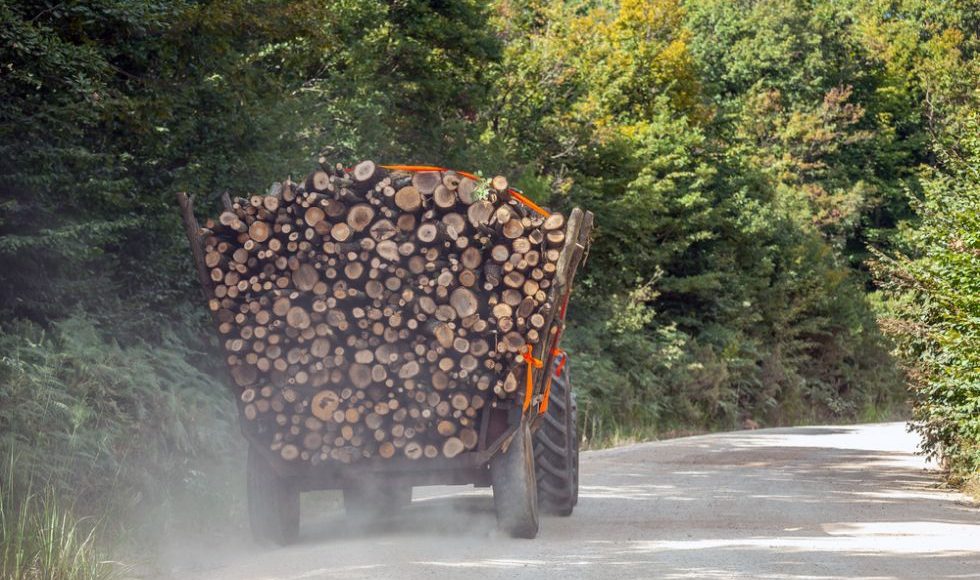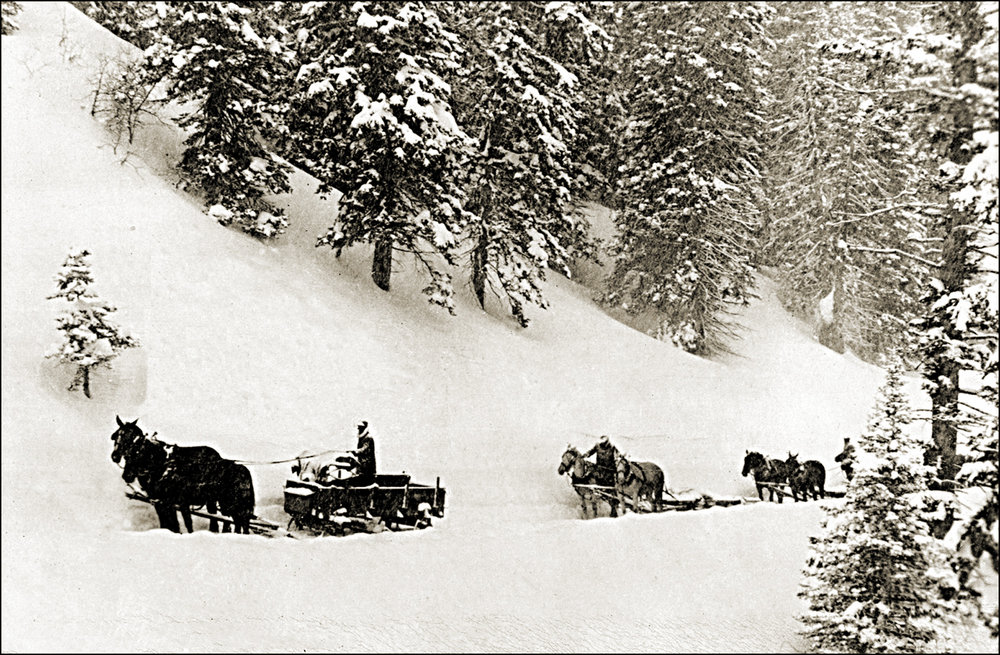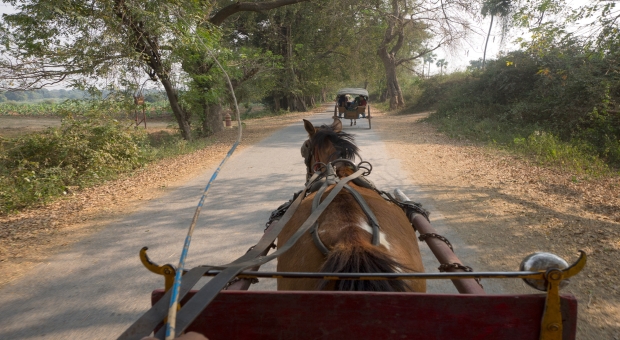This isn’t another article about bug-out vehicles (BOVs), but rather about something we could refer to as “bug-in vehicles.” We all know what BOVs are and all enjoy looking at pictures of some of the over-the-top BOVs people come up with. Maybe you’ve got a 4×4 truck or even a military surplus one that you’re converting to make your ride to head for the hills in. If you are, that’s cool; enjoy your project.
But in all the years I’ve been involved in prepping and survival, I’ve never really heard anyone talking about their transportation needs while bugging in. We act like we won’t have any transportation needs… or even worse, like we won’t need some way of hauling large amounts of supplies, like firewood.
Transportation needs
In case you’re not sure of what I’m talking about here, let me list a few things that we’re going to need some transportation for:
- Hauling water from a local river or lake
- Scavenging runs
- Hunting
- And of course, the hauling mentioned above of firewood
- Taking sick or injured family members to the hospital
I’m not much concerned about us having to walk to these locations; we’ll probably have to get used to walking. What I am worried about is hauling our finds back home. At 8.3 pounds per gallon, a five-gallon jug or bucket of water weighs in at 41.5 pounds. How far can you walk, carrying that weight? How far can you walk carrying double that weight? Can you do it every day, and if so, how much of your day is it going to take?
Yet without the ability to bring things back to our homes, we’re going to have a hard time bugging in. Oh, we’ll do fine as long as our stockpile lasts, but in a long-term survival situation, we’ve got to think beyond our supplies. Once those run out, we’ve either got to be self-sufficient, or we’ve got to have some way of gathering what we need and bringing it back to our homes.
Start with Self-Sufficiency
Our starting point with this has to be in developing self-sufficiency. The more necessary resources that we can grow, produce or harvest on our land, the better off we will be. That will undoubtedly be more challenging for some people than it will be for others. Trying to grow food or harvest rainwater in an apartment is extremely difficult, but not impossible.
My wife and I recently bought a house in a small town. There were several reasons for this, but one of those was to put ourselves in a better position for survival. I’ve long held the opinion that surviving in a small rural community is easier than surviving in a big city. Since I can’t afford to buy a farm or even a homestead, I ensured that the home I purchased was on a large lot. I have ¼ of a city block, just shy of a half-acre, for gardening and other work, as well as 2,500 square feet of rooftop to use for rainwater capture. While it’s not quite a homestead, it will eventually be as close to one as I can make it.
The crucial things
There are three primary areas of self-sufficiency that I see as crucial:
- water
- food
- firewood
We talk about water and food all the time, but I don’t hear anybody talk about self-sufficiency in firewood. Yet, if we look back to the pioneering days of this country, people staking land claims would try not only to make sure that they had water and farmland but also a patch of woods where they could cut wood for the fire.
I don’t have a patch of woods, but I have seven large trees which could be harvested for firewood if I had to. That’s a significant improvement over the last house I owned, where I only had two. While I would prefer to range farther afield to get my firewood, I have trees that I can use if I have to.
At the same time, one of my first projects at the new house has been to install rainwater capture. The nearest surface water is the reservoir three miles away. While that is within walking distance to harvest water, it would still take a couple of hours out of every day, which could probably be better used for other necessary survival tasks.
But that doesn’t eliminate my need for some way of hauling water if I need to.
How to Haul?
Okay, if we take as a given that we’re going to need some way of hauling things without using our cars and trucks (for which there won’t be any gasoline available anyway), then we’re going to need something more than our hands to haul things with. I see several categories of items that could work, depending on the individual’s circumstances. None of these will work for everyone, but there should be something here that will work for anyone.
Gas Powered
While gas shortages will most likely be an issue, there will be some gas. If we store it in 55-gallon metal drums or 5-gallon metal gas cans, it will last much longer than the six months that gasoline is rated to last. Add some fuel stabilizer to that, and it might be possible to use that gasoline for a couple of years, especially in two-stroke-cycle engines.
Even so, I’m not thinking in terms of burning that gasoline in my car or truck, but rather in my lawn tractor. That has a 17 HP engine, which will go a whole lot farther on a gallon of gas than any other vehicle I own. While it may not be all that fast, it’s a lot faster than walking, and it can pull either the 2’x 4′ lawn wagon or 4’x 8′ open utility trailer that I own. That way, I can carry 1,000 pounds, which is great for hauling water, firewood, or a steer.
We don’t need to limit our thinking to just lawn tractors, either. Any small gas-powered vehicle, like a go-cart, could be used in the same way. I’ve even hauled a trailer across the country with a motorcycle. The genuine concern is fuel consumption. If the vehicle is good on gas, then it’s an option to consider.
With the 55-gallon drum of gasoline that I have in my shed, I expect to be able to use my lawn tractor for hauling supplies for some time. While it is not a permanent solution, if I ration my fuel well and avoid wasting it, I should use the tractor and trailers to take care of my most critical needs.
Animal Powered
The second thing to consider is using animal power. Before the invention of the automobile, animal power was the main mechanical power used, other than water power. At its height, the horse population in the United States was about 25 million, while today, it is only 9 million. To put that more into perspective, those 25 million horses were alive at a time when the US human population was about 106 million, so there was one horse for every four people or one horse per family, even though not everyone owned a horse.
With the high cost of horses today, plus the high cost of owning a horse, there aren’t many of us who can afford to buy ourselves a couple of horses as part of our prepping. Still, that’s an excellent option for those who can, not only for hauling stuff around but also as the ultimate bug-out vehicle.
But what if you don’t have access to horses, the money to buy them, or a place to keep them? Don’t forget that horses aren’t the only animals that have been used to pull wagons and carts in the past. People have used goats to pull carts, and who can forget the dogsleds used way up north?
Of course, that depends again on what you have available to work with; but some preppers raise goats on their homesteads. There are a lot more preppers who have dogs. If you happen to have big dogs, training them to pull a wagon isn’t all that hard; after all, kids get their dogs to pull them in the wagon. If they can do that, why can’t we?
The only thing I’d caution you about is not to overestimate the strength of your goats or dogs. Invest the time in finding out what they really can pull and then back off from there somewhat. Set the limits on what you have them haul at a point where they’re comfortable doing the work so that you don’t have them just laying down and going on strike.
Human Powered
Finally, when all else fails, there’s human-powered. I left this for last for two reasons: as intelligent people, we should utilize the resources available to us as best we can. The second reason is that by using other forms of power, we can save our strength for those requiring it. Dogs and goats can’t help fell a tree. That’s going to have to be your muscle power. But they can help to haul the wood.
Nevertheless, it’s a good idea to have something that you can use to haul things by hand, even if you are planning on using some other method. You never know when that other method might fail, leaving you stranded.
For me, that wagon I can pull behind my lawn tractor also has a handle for pulling it by hand. That would probably be more efficient than the hand truck in my workshop. I also have a hunting cart (the mule) that my dad made to bring mule deer down off the mountain when hunting. The mule consist of a single bicycle tire, with a framework much like a stretcher, mounted over it. It takes two people to operate, with one holding on to each end. The back one has a handbrake for use when going downhill. Two people can haul a few hundred pounds of weight on that mule.
There are many other types of carts, either homemade or commercially manufactured, which can be used. The main point has something that will work when you need it to. It has to be easy enough to use, big enough to pile up with whatever you’re trying to take home, and strong enough to carry whatever weight you put on it. Besides that, it can be anything you can imagine.
Don’t forget about a bicycle. There was a time when I had lost my driver’s license and had only a bike for transportation. I found that it worked just fine for errands and other trips to the grocery store. I was even able to work out a trailer hitch for it to pull a small wagon behind the bike. I had to be careful about the weight, especially when going uphill, but it worked.
Keep It Versatile
Whatever you choose to use as a means of hauling supplies to your bug in, make sure that it is either indestructible or that you can fix it. Stockpile common parts, like air filters, spark plugs, fuel filters, and belts. Get a spare tire or two. In the case of animals, make sure you have medicines to take care of common problems. Whatever you are going to use, make sure you can keep it going, or you’re going to be back to hauling things by hand.
Adaptability is essential as well. My wagon is ideal for hauling several water jugs, but what if I need to be able to stack something, like firewood, on top of those water jugs? Most likely, it will just fall off unless I carry cordage or bungees with me. That small amount of extra weight is nothing but can significantly improve my effectiveness in any supply runs I end up making.
I don’t just carry cordage, though. I also carry a folding pruning saw, allowing me to cut branches to load them. While I don’t have any other tools strapped to my wagon/trailer yet, I’m looking to see what I should add. I don’t want to overdo it, adding unnecessary weight, but I want to be prepared.
When Bug Out Time Comes
If we’re all looking at bugging in as our excellent alternative, yet keeping a bug-out option if our homes become untenable, what makes any of us think that we’ll be able to use our bug-out vehicles several months after a disaster? Will we even have fuel to make them run?
Here again, the options I’ve listed above help us out. While none of them are as fast as bugging out in a nice BOV, they’re all the better than just heading out on foot with nothing more than a bug-out bag on our backs. The more we can take, the better, and that means having something to carry it in.
While my lawn tractor with a trailer behind it might seem a bit ridiculous as a BOV, it will allow me to carry several hundred pounds of gear and supplies. It will be slow going but faster than walking (5.5 MPH vs. 3.5). So, even if it doesn’t look as cool as a nice 4×4 truck, I know I’ll be able to use it as long as I have fuel to use. It really won’t consume all that much gasoline to go 100 miles to my survival retreat.








ToCor | August 17, 2021
|
All good ideas. A long, LONG time ago, as a ROTC Cadet we would go weekend camping and rappelling at Land Between the Lakes where we would have to haul everything in to our campsite. We carried in 5 Gal water cans strapped to a LC-1 ALUMINUM CARGO SUPPORT SHELF FOR ALICE PACK FRAME. Easier than hand-carrying the water cans. I’ve also thought about building a cart using 2 bicycle tires which would easily hold a couple hundred pounds of cargo.
Tom MacGyver | August 17, 2021
|
If a bicycle will get you between what you need and where it is, think about one of those baby trailers that hitch to the bike. You can put a surprising amount of stuff in one of those, and they’ll carry a couple of hundred pounds of weight. The bicycle remains one of the most efficient machines ever devised by man. That being said, if the last time you rode a bike was as a teenager, you may want to do some riding now. You never forget how to ride a bike. Trouble is, your muscles will remind you how long it’s been since you did! A few bucks will allow you to lay in enough spare parts to keep the bike running for a LONG time. Spare tires and thorn-resistant inner tubes should top the list; those and several tire patch kits. Keep all of these in a cool dark place to keep them from rotting over time.
I don’t know if I’d go the lawn tractor route unless my needs were close. While they do well on less than perfect roads, they’re SLOW. The engine doe s a lot of work to go 5 MPH. If you go this route make sure you have a spare drive belt for the tractor. This is the one that runs from the engine to the hydrostatic drive on the rear axle. Most people don’t even know it’s there, it’s so well hidden between the chassis rails. It’s an odd-sized belt, too.
Rudolf R. Blaser | August 17, 2021
|
Very good advice and please also consider what the prophets said about it:
https://www.youtube.com/watch?v=6ikdZAzvM_A
DONALD TRUMP END TIME PROPHECY – Jason A THE WORLD IN 2019
Bill In Idaho | August 17, 2021
|
A Small Tractor (NOT a “Lawn” Tractor) is your best choice – One with a Briggs&Stratton V-Twin at about 20-25 HP. Make sure that the Tranny and Running gear is tough enough to last. Mine is 30 years old, but the engine and tires are new. I store gasoline (NO gasohol) blended with Sta-Bil – in 5 Gal Jerry cans. One 5 gal. can lasts 2 months with quite a lot of use. The trailer is the right size so as Not to Overload it (too much). Easy to start and to maintain.
Joginder Singh | August 18, 2021
|
If you are bugging in then the bike is the way to go, Fuel is your last meal, silent reliable any easy to fix if it ever goes wrong, can be carried round or over obstructions. Just make sure that you have a bike for everyone in your family and to make lifeeasier that they all have gears use panniers and or trailers . And if you are on a bike post colapse you are just another john doe tring to survive if you have an operational vehicle with feul you become a potential worthwhile target for the vehicle and fuel if nothing else, It great I spent 30 plus year living and working in London savanging using a bike and trailer most of my furniture is either throwouts from work or sacaenged from skips and the streets.
Skip | October 23, 2021
|
This is a more modern solution that most people probably haven’t considered. It’s expensive, but you’ll have fast, powerful, reliable transportation virtually forever. I’m talking about electric vehicles. Primarily, the electric Ford F-150 that’s due to go on sale, next year. I plan to buy one, if I can afford it. I already have solar panels on my house that provide all of my electricity, so power for the truck will be there. There are several solar power companies that allow you to lease a solar power installation. That’s how I afford mine. You don’t have to lay out thirty or forty thousand dollars to purchase a system. I got mine at an out-of-pocket cost of only $110. The lease payments cover everything else. With sufficient battery capacity for storage, you’ll have a never-ending supply of electricity for your home and electric vehicle. Electric vehicles are also practically maintenance-free. You don’t need to worry about spark plugs, motor oil, fan belts, and a whole host of other things that are necessary to keep an internal combustion engine-powered vehicle working. I still have bikes and bike trailers, of course. But, electric vehicles make a lot of sense, especially in a world where gasoline and diesel are no longer available.